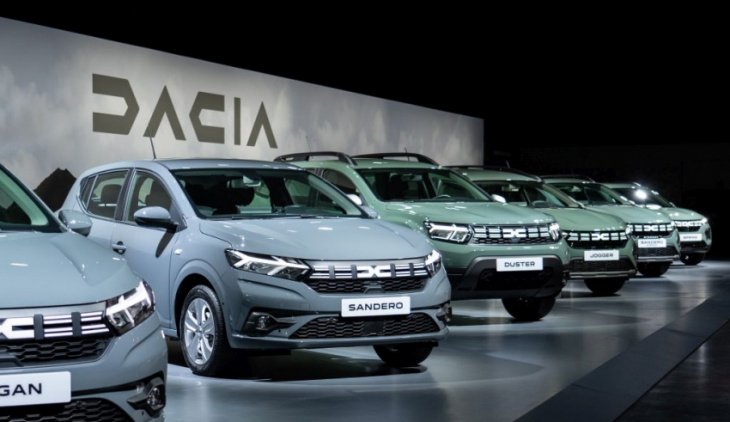Dacia Sandero set for combustion-powered third-gen in 2028

Dacia CEO Denis le Vot has doubled down on a commitment to going all-electric at the last possible moment, revealing that the firm will continue to develop combustion engines and strongly hinting the next-generation Dacia Sandero will be combustion-powered.
Speaking to reporters before the Paris motor show, Le Vot said the company will not pursue an all-electric line-up by 2030 – in Europe or globally – because it would threaten the brand’s position as one of the most affordable on the market.
He reiterated that Dacia will electrify as cheaply and efficiently as possible by “leveraging the assets” of the wider Renault Group, using technology and architecture developed by its parent company for its own electric cars, thereby saving significantly on development costs. But in the run-up to that, he said: “we are going to be the champion of the low-carbon ICE”.
He cited the firm’s experience in using liquid petroleum gas (LPG) as a means of running conventional combustion engines more efficiently and cleanly, and added: “We are going to continue working on low-carbon ICE [technology] for the future”, he added, clarifying that he was referring to Dacia’s own in-house engineers, but offering no further details about how they will seek to achieve this.
“The Sandero is going to have two generations before we hit 2035, which is the legal stop-off - if it happens - for ICE in general”, he said, suggesting that a third-generation Sandero (or equivalent B-segment hatchback) could arrive in 2028 or 2029 with a combustion powertrain, to be sold alongside a combustion-powered third-generation Dacia Duster (launching in 2024) and the 2025 Bigster SUV, which will last until 2032 and 2033 respectively.
Dacia has access to hybrid powertrains from parent company Renault, and at Paris is giving new details of the Dacia Jogger Hybrid it will launch in early 2023, but Le Vot also said that because his company’s cars are generally lighter than their rivals, they “can still afford to be ICE-LPG when the competition is already hybrid”, suggesting the firm remains committed to its LPG offering – a rarity among mainstream manufacturers, and no longer available in the UK – which could see it continue to offer non-electrically assisted powertrains up to the end of the decade.
Interestingly, sibling brand Alpine is at Paris with a radically styled racing car concept which showcases the potential for hydrogen-combustion technology, citing the aural and performance benefits of converting petrol engines to run on CO2-free H2 - but Dacia has not offered any comment about whether its affinity for gas-combustion could see it explore this area, too.
Dacia has previously said it aims to move all products onto the Renault-engineered CMF-B architecture, as used by the current Sandero, so any successor is likely to follow suit, and thus potentially use (initially, at least) the same turbocharged three-cylinder 1.0-litre engine familiar from today’s car. But an electrified Sandero – using Renault’s E-Tech full hybrid system – is expected on sale in this generation, and the next generation will need this option to remain on sale in Europe and the UK after 2030’s pure-combustion ban.
While stating his intention to buck the industry shift towards rapid all-out electrification, Le Vot did note that “Dacia is as electric as the market in Europe” at the moment, highlighting that the tiny Spring EV – which remains unconfirmed for a UK launch – accounts for 12% of the company’s volumes - matching an industry-wide average for EV mix.
